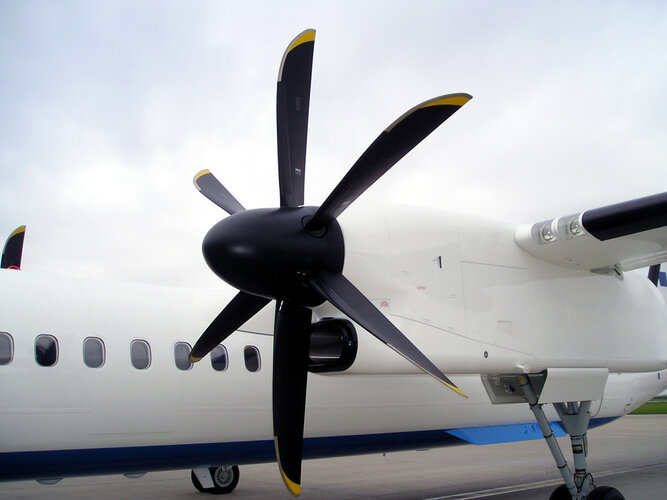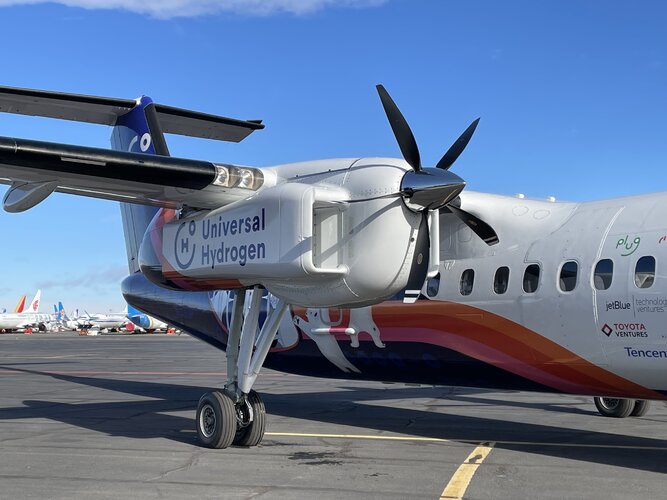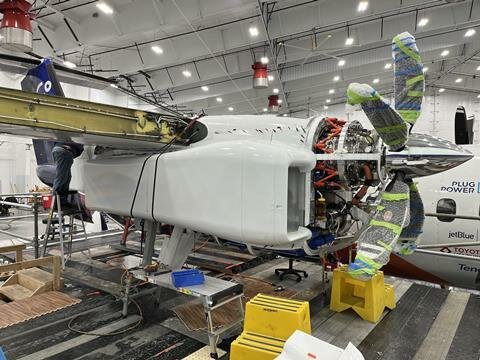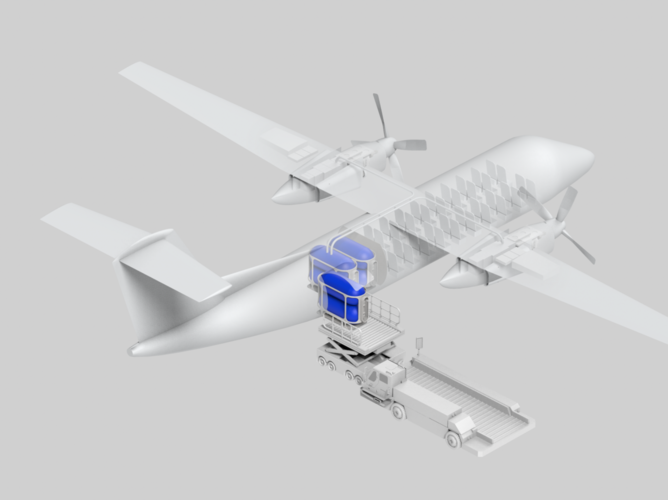@Zoo Tycoon thank you - I'm on your side here (despite usually going along rather well with @martinbayer - c'est la vie, as we say in french. People can't agree on the full and entire universe of things and facts, after all).
You are using an out of date browser. It may not display this or other websites correctly.
You should upgrade or use an alternative browser.
You should upgrade or use an alternative browser.
Electric and Hydrogen aeroplanes - feasibility and issues
- Thread starter Grey Havoc
- Start date
Despite I’m not a promoter of hydrogen as fuel I made my thoughts about how a large hydrogen airplane could be designed. I think in this application, the good old flying wing concept could be a very good approach, since it offers a very large internal volume which will be required for the low-density fuel in combination with good glide ratios. The large wing thickness is also mandatory for passenger accommodation. Such a plane could fly very efficient if operated at the optimum angle of attack, which means at a much lower speed than todays je planes and/or at a very high altitude (like the Otto Celera). For flying low and slow, fuel cells with props would be the best choice. For more medium height and speed, Turboprops would be the simplest answer, since fuel cells are losing efficiency in thin air due to the increased energy demand for air compressing. For the most ambiguous strategy of flying very high (e.g. >15 km) and relative fast (e.g. 700 km/h) Turbocompound propulsion would be the best choice because the combination of a piston engine with a turbine offers the highest power potential and efficiency and great height.
Of course, implementing to much innovation at once, usually doesn’t end up good, so this is no sort term solution.
Of course, implementing to much innovation at once, usually doesn’t end up good, so this is no sort term solution.
red admiral
ACCESS: Top Secret
- Joined
- 16 September 2006
- Messages
- 1,468
- Reaction score
- 1,541
Flying Wings aren't a good configuration for hydrogen power. You need to store it compressed for either gaseous or liquid hydrogen. This leads towards as few spheriodical thanks as possible to minimise mass of these pressure vessels. You then also need to consider insulation to reduce boil off, further pushing to as few spheriodical thanks as possible. For the fuel volumes of interest for long range aircraft then you simply can't fit a good flying wing configuration around these. You end up with lots of small tanks significantly increasing mass.
There's then also safety issues of wanting physical separation between the hydrogen fuel and people, which doesn't really work for a flying wing configuration.
There's then also safety issues of wanting physical separation between the hydrogen fuel and people, which doesn't really work for a flying wing configuration.
For longer range, only liquid hydrogen will be feasible and these don’t have to be spherical, in fact, none of the hydrogen truck tanks being developed is spherical, not even the pressure tanks. A spherical shape is ideal for an isotropic material (like steel), but not for carbon fiber, that’s mainly why all pressure tanks for H2 are sausage shaped. Several smaller pressure tanks are not heavier than few bigger ones, since the ratio of stored volume and required material with the same tension is constant (for the same proportions).
For liquid H2: Instead of isolating every single tank, it is much lighter and more efficient to wrap the isolation (aerogel?) around the whole assembly. Once in the air, the boil off is no longer a real issue, since the evaporation heat will keep it cool. Once the hydrogen will be ignited, the result will be fatal, no matter if you have 1 or 10 meters between the tanks and the passengers.
For liquid H2: Instead of isolating every single tank, it is much lighter and more efficient to wrap the isolation (aerogel?) around the whole assembly. Once in the air, the boil off is no longer a real issue, since the evaporation heat will keep it cool. Once the hydrogen will be ignited, the result will be fatal, no matter if you have 1 or 10 meters between the tanks and the passengers.
Last edited:
- Joined
- 27 May 2008
- Messages
- 1,043
- Reaction score
- 2,003
This nice lady again explaining some of the uncomfortable truths about hydrogen, all without gobbledygook;-
View: https://m.youtube.com/watch?v=Zklo4Z1SqkE
Iridium, key for fuel cells;- total worldwide production about 7.5 tons per year, from only four countries.
Iridium, key for fuel cells;- total worldwide production about 7.5 tons per year, from only four countries.
intresting, but it is in the wron thread, please let it be moved into the hydrogene/electric thread.This nice lady again explaining some of the uncomfortable truths about hydrogen, all without gobbledygook;-
View: https://m.youtube.com/watch?v=Zklo4Z1SqkE
Iridium, key for fuel cells;- total worldwide production about 7.5 tons per year, from only four countries.
Despite I"m a promoter of combustion engines, I have to admit, that truck Diesel engines for Euro stage VII are needing more platinum (for the catalyst) than a fuel cell (this doesn"t change the iridium problem).
There are other sources, claiminging much lower cost for hydrogen production eg. in Australia with Solar power, I don"t know the truth... Maybe solar thermal power plants are more suited for that purpose that because they can produce electricity around the day.
alberchico
I really should change my personal text
- Joined
- 14 January 2014
- Messages
- 573
- Reaction score
- 1,082
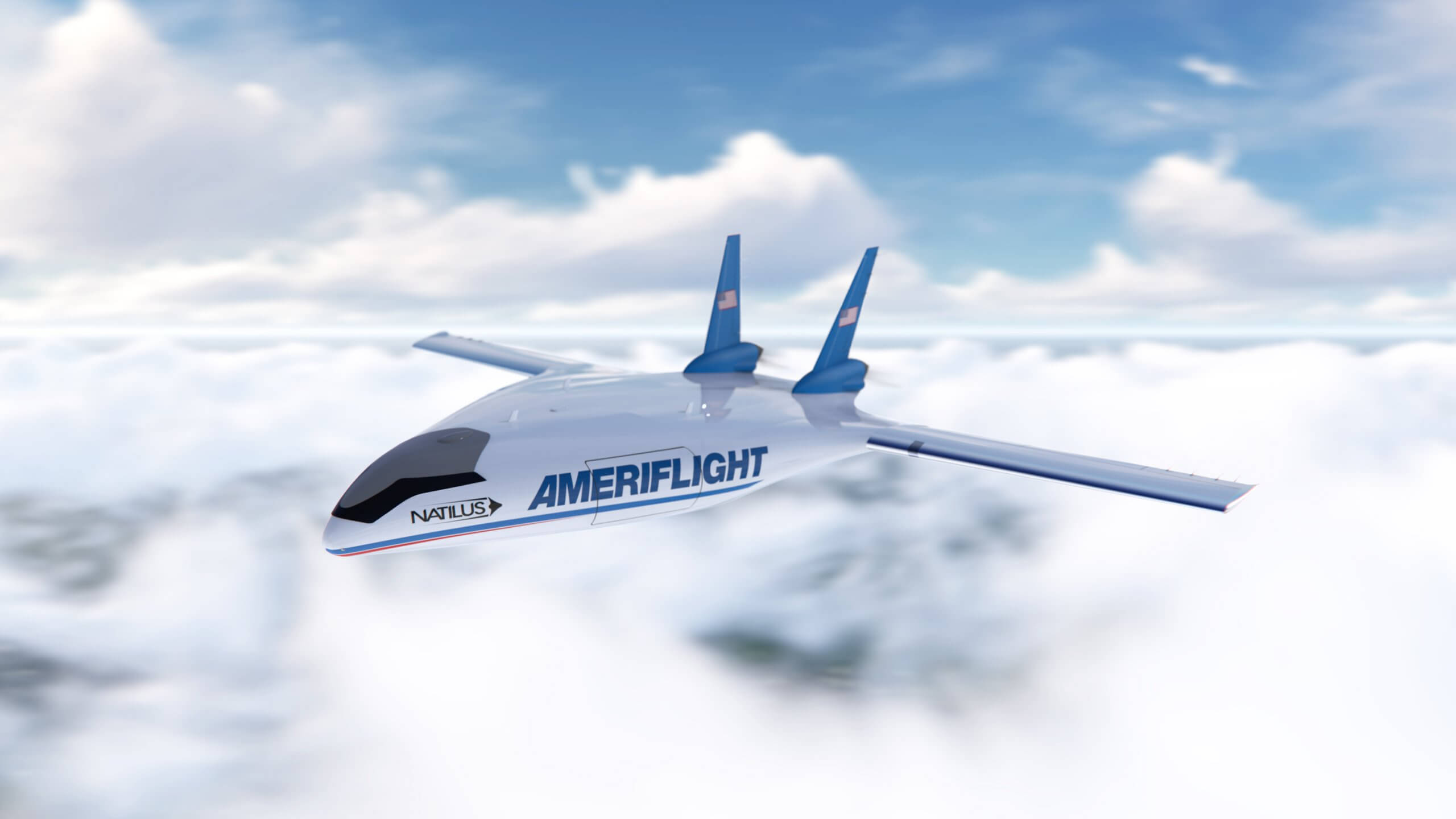
Ameriflight Signs Agreement with Natilus to Purchase 20 Autonomous Cargo Aircraft - Ameriflight
January 26th, 2023 FOR IMMEDIATE RELEASE Media Contact: Jamie Smith Ameriflight, LLC Director of Corporate Communications jsmith@ameriflight.com | 972.426.3066 ext. 76273 DALLAS, TX – Ameriflight, the nation’s largest Part 135 Cargo airline, announces agreement to purchase 20 autonomous cargo...
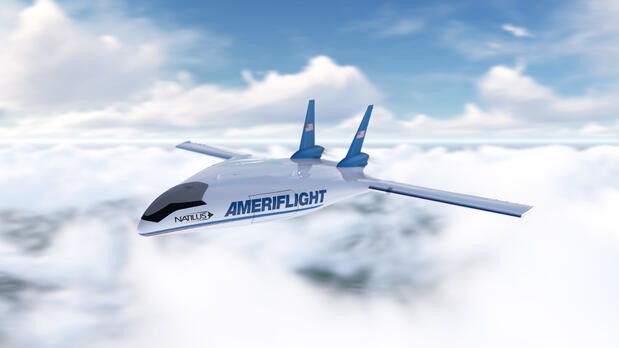
Ameriflight to buy 20 Natilus cargo aircraft - Air Cargo News
US cargo airline Ameriflight has placed an order for 20 Natilus Kona autonomous feeder cargo aircraft valued at $134m. Ameriflight has become the first
Not quite electric, but glad to see that this project is still alive.
More:Not sure if it qualifies as an airplane, but there is the Regent seaglider, an all electric WIG craft that was presented recently. According to the press release, they already have 334 on order.
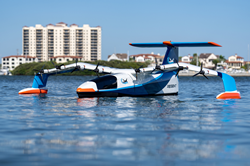
REGENT Publicly Displays Seaglider Prototype for the First Time During CoMotion Miami
/PRNewswire-PRWeb/ -- REGENT, the venture-backed aerospace and maritime company, unveiled a prototype of the company's all-electric seaglider for the first...www.prweb.com

Japan Airlines Backs Plans for Electric Wing-in-Ground-Effect Sea Gliders
The Asian carrier is investing an undisclosed amount in a U.S. start-up called Regent and assessing how sea gliders operating routes of up to 180 miles could better connect Japan's islands.
alberchico
I really should change my personal text
- Joined
- 14 January 2014
- Messages
- 573
- Reaction score
- 1,082
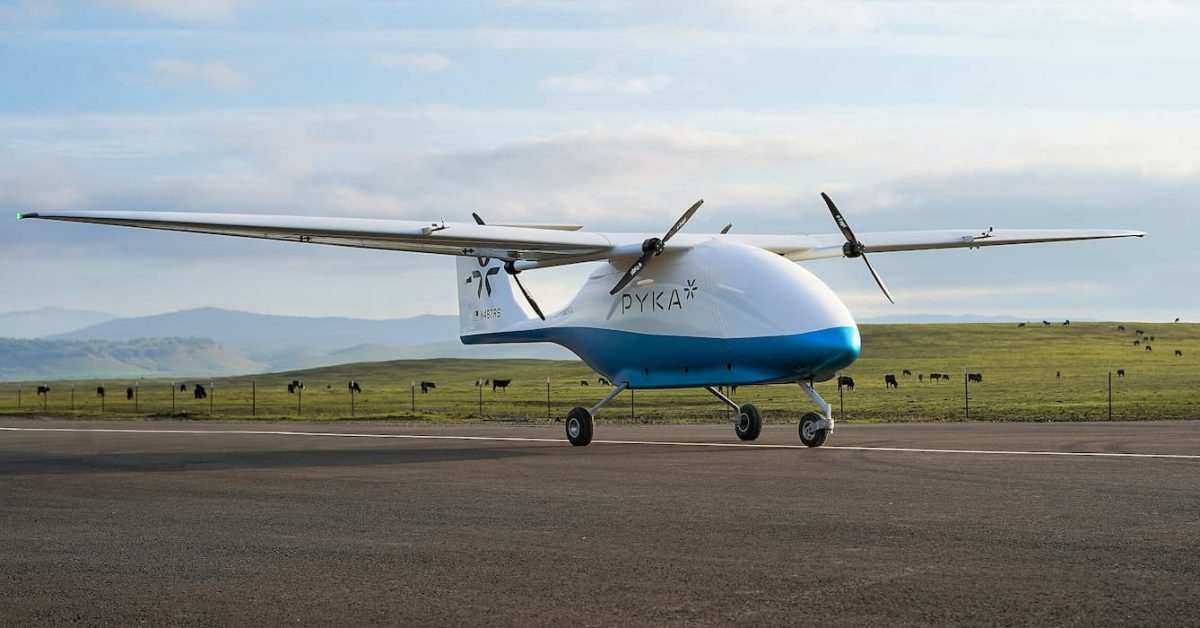
World's largest electric cargo plane unveiled, here's how far it can fly on its own
A new zero-emission autonomous electric cargo plane was unveiled Monday that could be a game changer in the shipping industry....
 electrek.co
electrek.co
At least some progress is being made on the cargo side of electric aviation. This company also has ambitious plans to build a 9 passenger commuter airliner based on this technology.
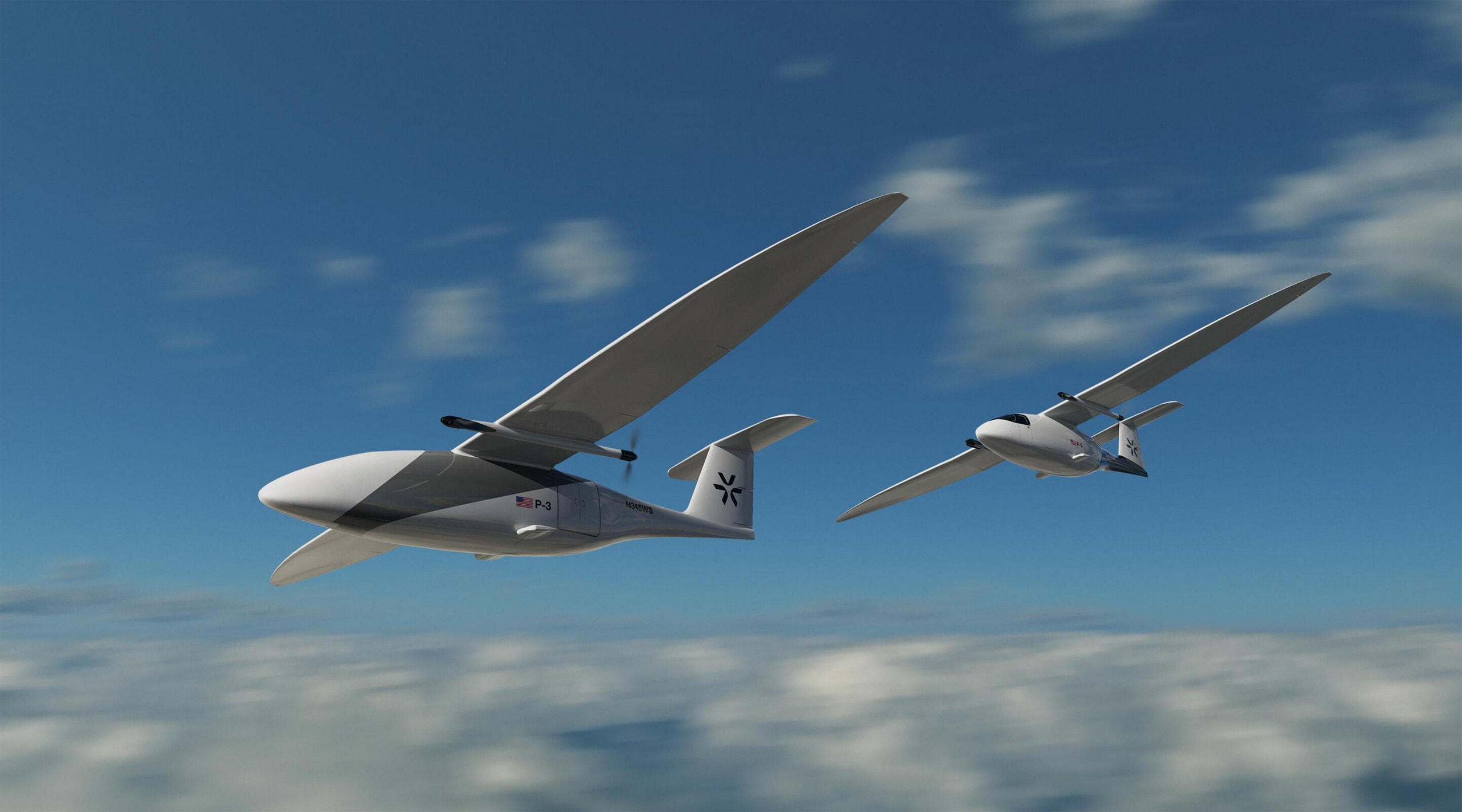
Pyka P3 to Revolutionize Autonomous Electric Flight, With Patented Propulsion System
A bold, new aircraft is ready to conquer regional flight, with highly-advanced avionics, propulsion system and autonomous capabilities.

World's largest electric cargo plane unveiled, here's how far it can fly on its own
A new zero-emission autonomous electric cargo plane was unveiled Monday that could be a game changer in the shipping industry....electrek.co
At least some progress is being made on the cargo side of electric aviation. This company also has ambitious plans to build a 9 passenger commuter airliner based on this technology.

Pyka P3 to Revolutionize Autonomous Electric Flight, With Patented Propulsion System
A bold, new aircraft is ready to conquer regional flight, with highly-advanced avionics, propulsion system and autonomous capabilities.www.autoevolution.com
Dronamics is also active in this space
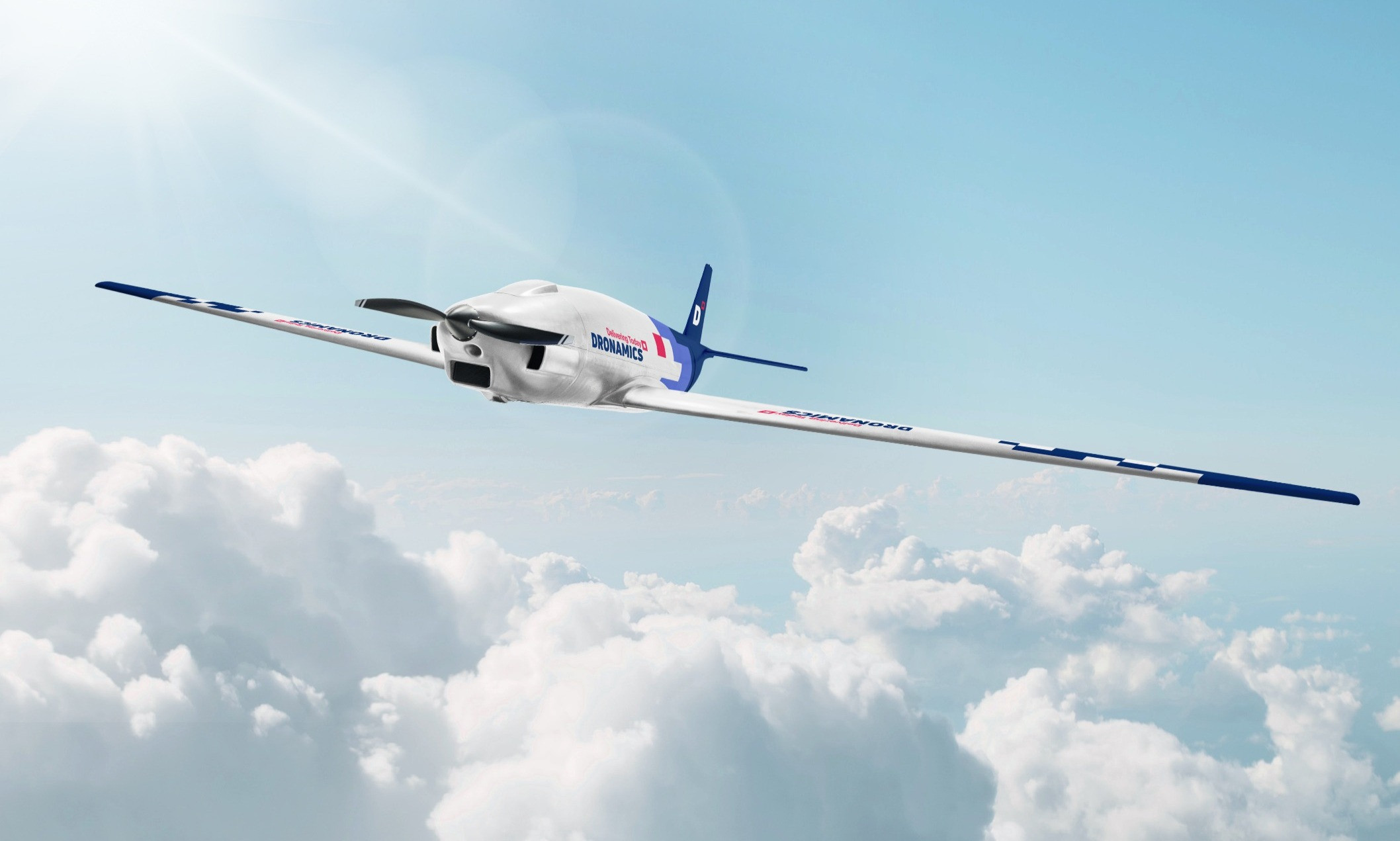
World's First Cargo Drone Airline | Dronamics
Dronamics offers an all-in-one solution for the middle-mile powered by our Black Swan cargo drone, a network of droneports, and fully mobile control and cargo systems.
 www.dronamics.com
www.dronamics.com
Would you trust an electric aeroplane? These airlines hope you might
Nestled in a hangar in Sydney’s south-west, engineers are trying to solve one of the aviation industry’s biggest problems: can flying go green?
alberchico
I really should change my personal text
- Joined
- 14 January 2014
- Messages
- 573
- Reaction score
- 1,082

Bjorn’s Corner: Sustainable Air Transport. Part 58. Summary Part 2. - Leeham News and Analysis
February 17, 2023, ©. Leeham News: Last week, we summarized that SAF is the short-term solution for GreenHouse Gas (GHG) reduction for Air Transport, and hydrogen is the longer-term solution for up to medium-haul flights. What about battery... Read More
A realistic assessment of where we are right now regarding sustainable air transport:
- SAF is the de-carbonization solution for the short term.
- Hydrogen will come into play longer-term.
- The battery killed the electric plane.
This spells trouble for ambitious projects like the Eviation Alice or the many Evtol projects who were counting on battery chemistry to rapidly improve making their products more viable. If battery technology won't significantly improve until the next decade, how many companies will have the funds to stick it out and wait that long ? For example, Eviation has pushed back certification of their Alice aircraft until 2027, but battery tech will not improve much by then. How many more years can they afford to burn through capital without having anything to show for it ? The big problem for many of these companies is that the majority of customers have not placed firm orders, but rather soft commitments, which does not require them to make any payments up front.
Last edited:
red admiral
ACCESS: Top Secret
- Joined
- 16 September 2006
- Messages
- 1,468
- Reaction score
- 1,541
If the industry can scale up SAF production in a short enough timeframe, then why would you bother with hydrogen powered aircraft at much greater risk?
- Joined
- 24 November 2008
- Messages
- 1,334
- Reaction score
- 1,681
Electric aircraft (and in particular eVTOL/STOL) do not necessarily require batteries as their primary power source to be entitled to exist. Distributed electric propulsion has its own advantages and if supplied by a ICE driven generator the aircraft's range/endurance isn't compromised.
Last edited:
- Joined
- 27 May 2008
- Messages
- 1,043
- Reaction score
- 2,003

Bjorn’s Corner: Sustainable Air Transport. Part 58. Summary Part 2. - Leeham News and Analysis
February 17, 2023, ©. Leeham News: Last week, we summarized that SAF is the short-term solution for GreenHouse Gas (GHG) reduction for Air Transport, and hydrogen is the longer-term solution for up to medium-haul flights. What about battery... Read Moreleehamnews.com
A realistic assessment of where we are right now regarding sustainable air transport:
- SAF is the de-carbonization solution for the short term.
- Hydrogen will come into play longer-term.
- The battery killed the electric plane.
I agree, but the bit I don’t get is why anyone would solve the de-Carbon problem twice, especially with a fuel as difficult as LH2. As pointed out a few times here the grim reality of infrastructure leakage will kill H2 as viable option. You know, the way diesel were great for the environment 25years ago but now we’ve realised they’re hells heating source so must be eliminated forthwith…. If not sooner.
I think Bjorn might be putting a fig leaf over the EU blushes.
alberchico
I really should change my personal text
- Joined
- 14 January 2014
- Messages
- 573
- Reaction score
- 1,082
Electric aircraft (and in particular eVTOL/STOL) do not necessarily require batteries as their primary power source to be entitled to exist. Distributed electric propulsion has its own advantages and if supplied by a ICE driven generator the aircraft's range/endurance isn't compromised.

eSTOL vs eVTOL: The jury’s still out
Can electric short take-off and landing (eSTOL) airplanes compete with eVTOLs for urban air mobility missions? The debate is far from settled.
I think the one drawback with using distributed electric propulsion is the sheer number of engines required to get good STOL performance adds so much complexity to the design that it makes the aircraft a maintenance nightmare. For example, the Electra Estol project has a whopping 8 engines. Even if these propulsion units are more mechanically simpler and reliable than conventional engines, they will still require inspections and servicing when used for commercial operations. Not to mention that the FADEC software needed to regulate all those engines to make life simple for the pilot is going to be a major source of problems early on. The Tecnam P2012's delivered to Cape Air fitted with Electronic Engine Controls still give the airline headaches and have resulted in a lot of cancelled flights.
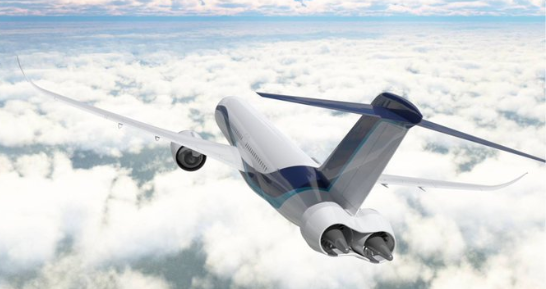
Bjorn’s Corner: Why e in ePlane shall stand for environment, Part 5. Distributed propulsion. - Leeham News and Analysis
January 17, 2020, ©. Leeham News: We continue our series why e in ePlane shall stand for environment and not electric, where we now examine the gains with electric/hybrid distributed propulsion systems. We started last week with the... Read More
alberchico
I really should change my personal text
- Joined
- 14 January 2014
- Messages
- 573
- Reaction score
- 1,082
The AirCraft Company launches 30-seater hybrid-electric airline with wheelchair access – Urban Air Mobility News
 www.urbanairmobilitynews.com
www.urbanairmobilitynews.com

The AirCraft Company Unveils Wheelchair-Accessible, Hybrid-Electric Regional Airplane
The AirCraft Company, a new start-up based in Wichita, Kansas, has revealed its plans to produce a hybrid-electric, 30-seat regional airliner called the Pangea SY30J.
We have a new ambitious startup project based in the U.S.

Bjorn’s Corner: Sustainable Air Transport. Part 58. Summary Part 2. - Leeham News and Analysis
February 17, 2023, ©. Leeham News: Last week, we summarized that SAF is the short-term solution for GreenHouse Gas (GHG) reduction for Air Transport, and hydrogen is the longer-term solution for up to medium-haul flights. What about battery... Read Moreleehamnews.com
A realistic assessment of where we are right now regarding sustainable air transport:
- SAF is the de-carbonization solution for the short term.
- Hydrogen will come into play longer-term.
- The battery killed the electric plane.
I agree, but the bit I don’t get is why anyone would solve the de-Carbon problem twice, especially with a fuel as difficult as LH2. As pointed out a few times here the grim reality of infrastructure leakage will kill H2 as viable option. You know, the way diesel were great for the environment 25years ago but now we’ve realised they’re hells heating source so must be eliminated forthwith…. If not sooner.
I think Bjorn might be putting a fig leaf over the EU blushes.
You should not believe all the propaganda against the Diesel engine, the NOx/HC Limits for large aero turbine engines for example could easily be passed with Diesel engines without any any aftertreatment (For Soot, there is no comparable definition). If you would really care about NOx emissions, replacing all the jets by Diesels would be a good approach....
Modern turbines inherently have a better performance regarding Nox.
Nox is all about the quality of the combustion process, something out of reach with a Diesel engine that relies on after treatment to reach adequate levels.
Yes turbo helps but you'll still have the dead mass of an exhausts filtering system and the weight/complexity to add an efficient turbo for higher altitude.
So, it's not possible to argue what you're stating above. Even discounting the level of byproduct inside the diesel fluid itself that will inherently generates more Nox than gasoline or jet fuel.
Nox is all about the quality of the combustion process, something out of reach with a Diesel engine that relies on after treatment to reach adequate levels.
Yes turbo helps but you'll still have the dead mass of an exhausts filtering system and the weight/complexity to add an efficient turbo for higher altitude.
So, it's not possible to argue what you're stating above. Even discounting the level of byproduct inside the diesel fluid itself that will inherently generates more Nox than gasoline or jet fuel.
Please read this paper:
"If these figures are recalculated in g/kWh, as is usual for piston engines, using the net thrust for take off given above and the fan power given for the piston engine in chapter VI, the result is 1.1 g/kWh for HC, 6.8 g/kWh for CO and 24.9 g/kWh for NOX. These limits can easily be kept by a Diesel engine without exhaust gas aftertreatment. The smoke emission from aircraft engines is measured by a procedure which is not in use for piston engines, at least not in this form. So no direct comparison is possible."
It was written by two Professors from the University Braunschweig, one it head of the combustion engine department (Pof. Eilts) and the other (Prof. Friedrichs) is head of the turbine department, so they should know what they are writing about. Diesel engines can fulfill the exhaust emissions of aircraft turbines without any aftertreatment (maybe with a simple oxidation catalyst).
The by its time very tight Euro 4 (cars) and Euro 5 (trucks) stage was reached by optimizing the NOx/Soot trade off in the engine and a simple oxidation catalyst as only after treatment. NOx is formed whenever air gets hot and has little to do with the fuel quality. In both cases (combustion in Diesels or turbines) the goal is to achieve a rapid homogenization to avoid temperature peaks. Diesel engines relay on high injection pressures to do that.
"If these figures are recalculated in g/kWh, as is usual for piston engines, using the net thrust for take off given above and the fan power given for the piston engine in chapter VI, the result is 1.1 g/kWh for HC, 6.8 g/kWh for CO and 24.9 g/kWh for NOX. These limits can easily be kept by a Diesel engine without exhaust gas aftertreatment. The smoke emission from aircraft engines is measured by a procedure which is not in use for piston engines, at least not in this form. So no direct comparison is possible."
It was written by two Professors from the University Braunschweig, one it head of the combustion engine department (Pof. Eilts) and the other (Prof. Friedrichs) is head of the turbine department, so they should know what they are writing about. Diesel engines can fulfill the exhaust emissions of aircraft turbines without any aftertreatment (maybe with a simple oxidation catalyst).
The by its time very tight Euro 4 (cars) and Euro 5 (trucks) stage was reached by optimizing the NOx/Soot trade off in the engine and a simple oxidation catalyst as only after treatment. NOx is formed whenever air gets hot and has little to do with the fuel quality. In both cases (combustion in Diesels or turbines) the goal is to achieve a rapid homogenization to avoid temperature peaks. Diesel engines relay on high injection pressures to do that.
Last edited:

Universal Hydrogen Successfully Completes First Flight of Hydrogen Regional Airliner
Universal Hydrogen Co., this morning flew a 40-passenger regional airliner using hydrogen fuel cell propulsion. The airplane, nicknamed Lightning McCl
www.businesswire.com
Attachments
- Joined
- 24 November 2008
- Messages
- 1,334
- Reaction score
- 1,681
I feel a little sorry for the propeller in front of this huge nacelle.
... the good old flying wing concept could be a very good approach ...
Ignoring the part about how hydrogen is special, when talking about flying wing airliners it's always important to remember what killed the concept with traditional propulsion. And that's emergency aircraft evacuation rules. When thinking of how to lay out the design, you have to remember that to be certifiable you need to be able to fully evacuate the plane in 90 seconds, even if the landing gear collapsed, without having to have anyone climb up anything, and without marching your passengers through a fuel tank.
This is a problem for flying wings because you cannot evacuate to the wingtips (would take too long), you cannot evacuate up (can't expect crash victims to climb) you cannot evacuate below (can't expect the plane to not be flat against the ground), you cannot evacuate towards the front of the plane (can't expect that the plane is not standing on it's nose or dug into material, blocking the front), so the only direction you can possibly evacuate is towards the rear. This makes the trailing edge of the wing unusable for fuel tanks, because FAA is not going to certify a plane today if your only viable evacuation route is through them.
Then this means that there is suddenly not all that much usable volume in a flying wing after all, because a huge part of the trailing edge of the wing is not tall enough for passengers, and can't be used for fuel.
Why wouldn't be possible to evacuate through the leading trailing edge? There is a lot of door systems that open way through smaller volume. Think at sailing ship cabin entry door for example, combining a hatch with a front access.


Last edited:
There are a lot of pros and cons about flying wings vs. traditional aircrafts. If the evacuation would have been the only obstacle, it would have long been solved and we would see flying wings on every airport. This is definitely not a job stopper.
I’m not claiming, the hydrogen will automatically lead to flying wings, but the it adds more on the pro side for flying wings than to traditional aircrafts. It might be worth, reconcidering fyling wings, if a large internal volume and maximum energy efficiency (with lower speed) will be required.
I’m not claiming, the hydrogen will automatically lead to flying wings, but the it adds more on the pro side for flying wings than to traditional aircrafts. It might be worth, reconcidering fyling wings, if a large internal volume and maximum energy efficiency (with lower speed) will be required.
Why wouldn't be possible to evacuate through the leading edge? There is a lot of door systems that open way through smaller volume. Think at sailing ship cabin entry door for example, combining a hatch with a front access.
Assume the plane plowed into a field, and the leading edge is at least partially buried. Now what?
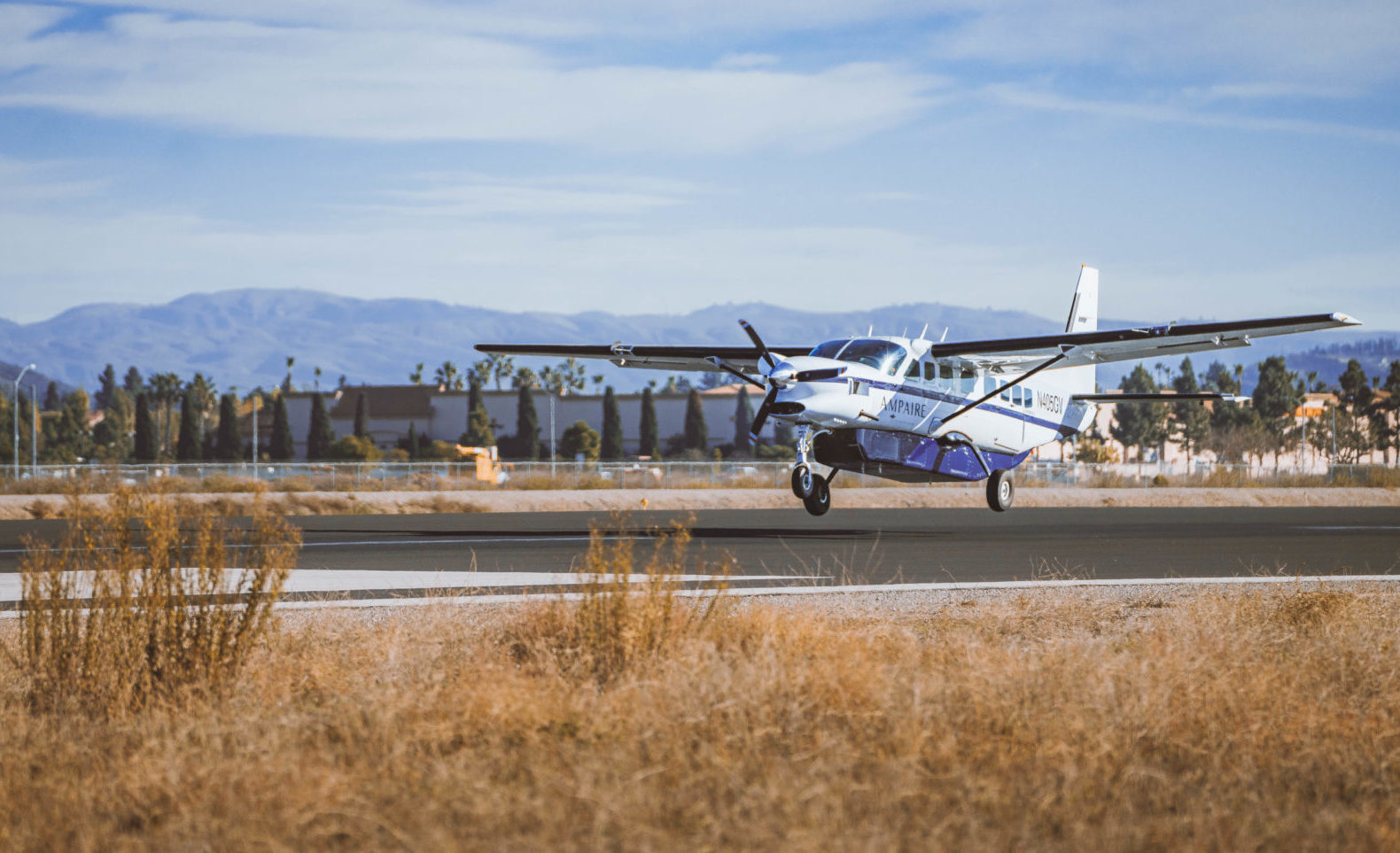
The quest to electrify Cessna Caravans draws funds, sales orders
Learn about aerospace industry developments in AIAA’s Aerospace America Magazine, the voice of the aerospace industry.
Why wouldn't be possible to evacuate through the leading edge? There is a lot of door systems that open way through smaller volume. Think at sailing ship cabin entry door for example, combining a hatch with a front access.
Assume the plane plowed into a field, and the leading edge is at least partially buried. Now what?
Just split the door in a lower and a upper half and everybody can get out easiely... Even without that trick, in case of a partialle burried leading edge, there will be enough doore left to get out. A fully burried leading edge with passengers still alive will be very unlikely.
Regarding the Caravan conversion described in the link above. Here is an extract from the report:
Very suspicious. Swapping a turbine with Diesel with such a low fuel consumption difference and claiming lower emissions is probably a gross trickery. Let's check their Nox levels first.
At the end of the day, by burning half as much fuel, you have half the emissions in the environment,” the company’s co-founder and CEO, Kevin Noertker, told me.
Very suspicious. Swapping a turbine with Diesel with such a low fuel consumption difference and claiming lower emissions is probably a gross trickery. Let's check their Nox levels first.
Again, any Diesel is producing much less NOx than a gas turbine, even without any exhaust after treatment see above or at least try to read it this time:
""If these figures are recalculated in g/kWh, as is usual for piston engines, using the net thrust for take off given above and the fan power given for the piston engine in chapter VI, the result is 1.1 g/kWh for HC, 6.8 g/kWh for CO and 24.9 g/kWh for NOX. These limits can easily be kept by a Diesel engine without exhaust gas aftertreatment. The smoke emission from aircraft engines is measured by a procedure which is not in use for piston engines, at least not in this form. So no direct comparison is possible."
See also: https://www.ourair.org/wp-content/uploads/epatierstnds.pdf
""If these figures are recalculated in g/kWh, as is usual for piston engines, using the net thrust for take off given above and the fan power given for the piston engine in chapter VI, the result is 1.1 g/kWh for HC, 6.8 g/kWh for CO and 24.9 g/kWh for NOX. These limits can easily be kept by a Diesel engine without exhaust gas aftertreatment. The smoke emission from aircraft engines is measured by a procedure which is not in use for piston engines, at least not in this form. So no direct comparison is possible."
See also: https://www.ourair.org/wp-content/uploads/epatierstnds.pdf
Last edited:
alberchico
I really should change my personal text
- Joined
- 14 January 2014
- Messages
- 573
- Reaction score
- 1,082

The quest to electrify Cessna Caravans draws funds, sales orders
Learn about aerospace industry developments in AIAA’s Aerospace America Magazine, the voice of the aerospace industry.aerospaceamerica.aiaa.org
The big problem with a fully electric Caravan is that the batteries currently available will not give you any sort of meaningful range once things like IFR reserves are factored in. It's the same issue that is plaguing the Eviation Alice. A hybrid approach is the best solution right now. If they could convince a major player like FedEx to operate a few converted Caravans to evaluate the merits of their hybrid electric powerplant, that could open the door to a large order. The big question is whether the weight and complexity added to the Caravan is worth the 25% reduction in operating costs. For example, putting the batteries in the belly pod cuts into the payload of the aircraft, reducing revenue. But if the figures add up then this conversion will be a roaring success.
Last edited:
I’m not convinced, that a hybrid system is really useful. Hybrid systems tend to add the weight and complexity of two propulsion systems and will end up in a plane which will have nearly no range in electric operation and totally overweight with the Diesel engine plus the batteries and the electric engine.
The only useful approach for a hybrid would be a serial hybrid were an electric engine will increase the take off power with a small battery. During the flight the electric engine would be used as a generator so that the power to weight ratio could be even lower than with the Diesel alone. Of course, this only works if pure electric flying is not the focus, except maybe during the landing when only a small amount of power will be needed.
The only useful approach for a hybrid would be a serial hybrid were an electric engine will increase the take off power with a small battery. During the flight the electric engine would be used as a generator so that the power to weight ratio could be even lower than with the Diesel alone. Of course, this only works if pure electric flying is not the focus, except maybe during the landing when only a small amount of power will be needed.
alberchico
I really should change my personal text
- Joined
- 14 January 2014
- Messages
- 573
- Reaction score
- 1,082

Rolls-Royce Launches New Turbogenerators for Hybrid Aircraft
Rolls-Royce is developing new-generation turbogenerator technology that will be the basis for small engines to power hybrid-electric aircraft.

Honeywell's Newest Turbogenerator Will Power Hybrid-Electric Aircraft, Run On Biofuel
/PRNewswire/ -- Honeywell (NYSE: HON) announced it is developing a power source for hybrid-electric aircraft, planned for demonstration later this year. At 280...
There are small compact turbogenerators under development that will hopefully make hybrid electric aircraft more feasible, but the issue is that if you want maximum efficiency, you need a clean sheet design optimized for this type of powerplant. And that's a huge hurdle for a small startup right now.
It would still add weight and complexity to the aircraft, which means higher maintainance cost and lower payload.
Using different batteries for regular operation and emergency reserve might be a better option, air breathing Lithium or Aluminium batteries have a very high energy content but are not recharable. It could make sense to add them as a backup for IFR reserve and save some weight with a smaller battery for regular operation. Of course, this will not add as much range as any range extender will do, but it could improve the performance of a purly electric plane at least a bit.
Using different batteries for regular operation and emergency reserve might be a better option, air breathing Lithium or Aluminium batteries have a very high energy content but are not recharable. It could make sense to add them as a backup for IFR reserve and save some weight with a smaller battery for regular operation. Of course, this will not add as much range as any range extender will do, but it could improve the performance of a purly electric plane at least a bit.
- Joined
- 27 May 2008
- Messages
- 1,043
- Reaction score
- 2,003
I feel a little sorry for the propeller in front of this huge nacelle.
Looks to me they’ve flown a hydrogen fuel cell with its own cooling fan. Did anyone else notice there wasn’t a Flight 24 (or similar) trace? I would contend this isn’t even capable of maintaining level flight at LD max which they may not be too proud of. Still all the head lines about game changing etc are good for boosting the company value.
If the industry can scale up SAF production in a short enough timeframe, then why would you bother with hydrogen powered aircraft at much greater risk?
It probably can't scale up far enough. Hydrogen production is significantly more energy-efficient than SAF because biomass is very limited in scope. Many different demands, including some that use other energy sources today, will be competing for renewable electricity input in the more distant future. If hydrogen requires less that's a potentially big cost advantage.
Looks to me they’ve flown a hydrogen fuel cell with its own cooling fan. Did anyone else notice there wasn’t a Flight 24 (or similar) trace? I would contend this isn’t even capable of maintaining level flight at LD max which they may not be too proud of. Still all the head lines about game changing etc are good for boosting the company value.
The Bell X-1 could not take off under its own power. Ohain's first jet engine would not run on storable hydrocarbon fuel. Yet powered flight including at supersonic speed, using hydrocarbon-fuel gas turbines, is economically viable or at least routinely achievable today. That said, I'd agree that - for proper airliners at least - fuel cells are not the way forward, the power-to-weight ratio of gas turbines is simply too good.
While this shows hydrogen can succeed, it also demonstrates that it is not a near-term solution, for aerospace applications perhaps not even mid-term. Between the first experiments, the stage we are currently at with hydrogen tech, and successful application it took a decade or more, at a time where the pace of progress was faster. But longer-term it is probably what we need to aspire to - SAF production is not likely to keep up with demand for an acceptable cost and whether batteries can ever play a role at all is doubtful to say the least (weight).
Last edited:
Similar threads
-
-
-
Electric Aviation Group (EAG) Hybrid Electric Regional Aircraft (HERA)
- Started by fightingirish
- Replies: 11
-
Speculation on the 7th, 8th and 9th generation Fighter
- Started by Michel Van
- Replies: 11
-

